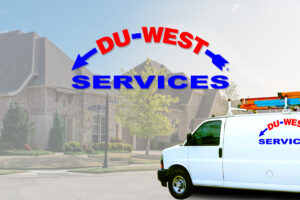Reasons Why Your Concrete May Be Uneven in Fort Worth
Hey there, Fort Worth homeowners! Ever walked across your driveway and noticed it’s starting to resemble a mini roller coaster rather than a flat surface? You’re definitely not alone. As someone who’s been fixing concrete issues around Texas for years with Du-West Services, I’ve seen firsthand how our local conditions can wreak havoc on concrete surfaces.
Let’s chat about why your concrete might be playing this uneven game and what we can do about it before those small dips turn into major headaches.
Those Pesky Expansive Clay Soils
If you’ve lived in Fort Worth for any time at all, you probably know we’re sitting on some seriously temperamental soil. Our clay soil is what we call “expansive” – it basically can’t make up its mind about its size.
During our scorching Texas summers, this soil shrinks up like a wool sweater in a hot dryer, leaving gaps under your concrete. Then when the rains finally come, it swells back up like a sponge. Your concrete tries to ride this soil roller coaster, but eventually, something’s gotta give.
This constant push and pull is why you might see cracks forming or one side of your driveway sinking lower than the other.
Water, Water Everywhere (Where It Shouldn’t Be)
Poor drainage is concrete’s archenemy. When water collects around your concrete instead of draining away, it’s like a slow-motion disaster movie for your driveway or patio.
Do you notice puddles forming near your concrete after it rains? Or maybe water seems to flow toward your house instead of away from it? These are red flags that water might be washing away the supporting soil underneath your concrete slabs.
Tree Roots: The Underground Invaders
Don’t get me wrong I love the beautiful trees we have in Fort Worth. But their roots? They’re on a mission to disrupt every concrete surface in their path.
Large tree roots can literally push up sections of concrete from below, creating those annoying raised edges that everyone trips over at family barbecues. And here’s something many homeowners don’t realize – when you remove a tree, those decaying roots leave behind empty spaces that eventually collapse, causing concrete to sink.
If you’ve got mature trees within about 20 feet of your concrete, they might be secret contributors to your uneven surfaces.
The Silent Eroder: Soil Washout
Water doesn’t just cause problems by pooling – it actively carries away soil particles over time.
This erosion is particularly common when:
- Your gutters are dumping water right next to concrete
- You’ve got underground plumbing leaks
- Your sprinkler system is turning certain areas into mud pits
Once that supporting soil disappears, your concrete has no choice but to sink into the void.
Construction Shortcuts Come Back to Haunt
Sometimes the problem started before the concrete even dried. If whoever installed your concrete skipped crucial steps like properly compacting the soil or using the right base materials, you’re almost guaranteed to see problems down the road.
It’s like building a house on sand it might look fine at first, but it won’t stand the test of time. If your concrete started showing issues shortly after installation, this might be your culprit.
Too Much Weight to Bear
Sure, concrete is strong, but everything has its limits. When you regularly park heavy vehicles or store weighty equipment on concrete that wasn’t designed for that kind of load, something’s eventually going to give.
Think of it like sitting on a chair designed for a child it might hold for a while, but eventually, those legs are going to start bending.
When Is It Time to Call the Pros?
Listen, small concrete issues have a nasty habit of becoming big (and expensive) problems if ignored.
It’s worth giving us a call if you notice:
- Cracks that seem to be growing
- Sections that are obviously uneven or sloped
- Water collecting in certain spots
- Any concrete areas that have become trip hazards
- Gaps appearing underneath concrete edges
At Du-West, we don’t just patch things up we investigate what’s causing the problem so we can fix it right the first time.
How We Get Your Concrete Back on the Level
The good news? You probably don’t need to tear out that concrete and start from scratch. Here’s how we tackle uneven concrete.
First, we inspect the area thoroughly and analyze what’s happening with the soil underneath. Based on what we find, we’ll either use mudjacking (pumping a special cement mixture under the slab) or polyurethane foam injection to lift the concrete back to where it should be.
We drill a few strategic holes, pump in the lifting material, and watch as your concrete rises back to its original position. Then we seal everything up, and in most cases, you can use your concrete again that same day!
Got Questions? We’ve Got Answers
Most folks want to know if concrete leveling is better than replacement and in most cases, absolutely! It’s faster, more affordable, and way less disruptive. And if we address what caused the problem in the first place, your newly leveled concrete can stay that way for decades. When you want the best, call Du-West. Let’s get your concrete back on solid ground!

